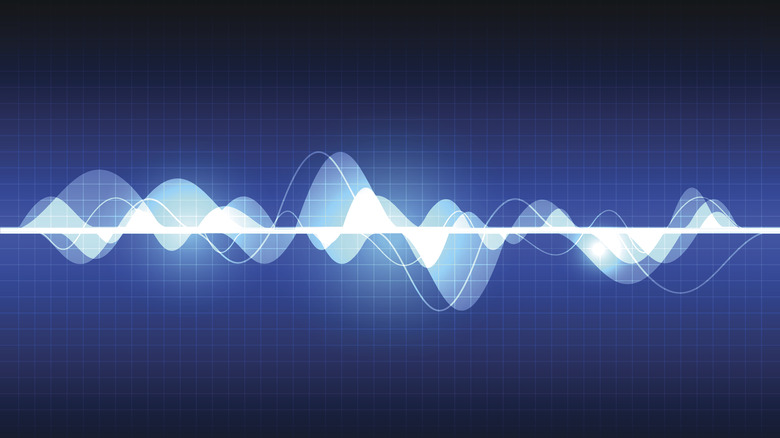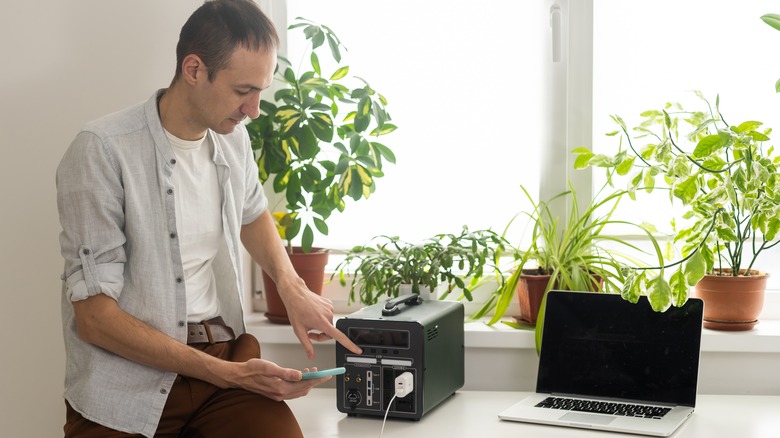What Is An Inverter Generator & How Does One Work?
Whether camping where there's not a source of electricity or the power goes out at home and you need it back up sooner rather than later, a generator is a useful tool. While there are several variations and considerations for generators, it all comes down to your personal needs and preferences. If you're looking for something to keep your home appliances running in case the power goes out, an Inverter generator is the ideal option. They're slightly more expensive, but they're safer for smaller electronics like computers. Inverter generators are safer for appliances because of their total harmonic distortion (THD). A lower THD is "cleaner," which isn't the same as "clean energy" from solar power, but it's more suitable for the electronics commonly used in the home. Inverter generators produce power with similar THD as wall outlets.
A number of companies make inverter generators, including Champion, Honda, Ryobi, and Briggs & Stratton. They even come in different forms, depending on your tastes. If you want something that's quieter and doesn't stand out too much, you can purchase a closed-frame model. On the other hand, if you're not picky when it comes to the aesthetics of the generator and don't mind some extra noise, you can go with an open-frame. Closed-frame variants produce less noise, but open-frame inverter generators can handle larger loads. Even though they're louder, they're typically always 50% quieter than other generators.
Total harmonic distortion
THD is the measure of how clean the power being used is. The term "clean" here doesn't mean there's zero emissions being produced, even though inverter generators do produce fewer emissions than other types of generators. When clean power is mentioned in terms of THD, it refers to the amount of harmonic distortion that exists within an electrical signal. It's measured in percentages and informs you of the amount of distortion.
The type of power that comes out of a home's wall outlet is AC power, and it can have between 1% and 3% THD. While traditional generators also produce AC power, the THD can be as high as 25%. When you have a generator producing higher THD, it can effect your electronics, especially smaller devices, in negative ways. A higher THD might cause your computer or smartphone to overheat or even malfunction.
Inverter generators clean up the distortion and keep the THD as low as 1%, falling more in line with the same amount of power produced by a house's wall outlet. That higher THD is okay for larger equipment or keeping the house running when there's a power outage, but more sensitive devices need a lower THD. It's important to know how to choose the right generator for your home, otherwise you can end up damaging something as important as your smartphone.
How do inverter generators work?
The term "inverter generator" kind of sounds like it would invert the process conventional generators use to generate power. That's not really the case at all. All generators are comprised of an engine and an alternator just like the gas-powered engines we wish Ford still made. The alternator turns the mechanical energy from the engine into electrical energy and immediately dumps that power into the generator's control panel.
An inverter generator, on the other hand, takes an extra step to "clean up" the energy. The gasoline or propane poured into the generator will run the engine, which turns the alternator. Then, the alternator produces alternating current (AC) power, which has a high THD at this point. From there, the AC power flows into the rectifier, where it's converted to direct current (DC) power. This is where conventional generators will be done and send their energy to the control panel. An inverter generator, on the other hand, will take an extra step and send the DC power into an inverter module where it turns the energy back into AC power, thus lowering its overall THD.


